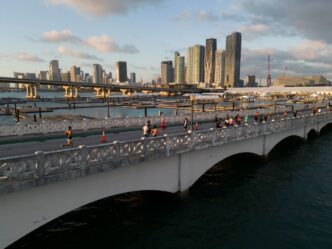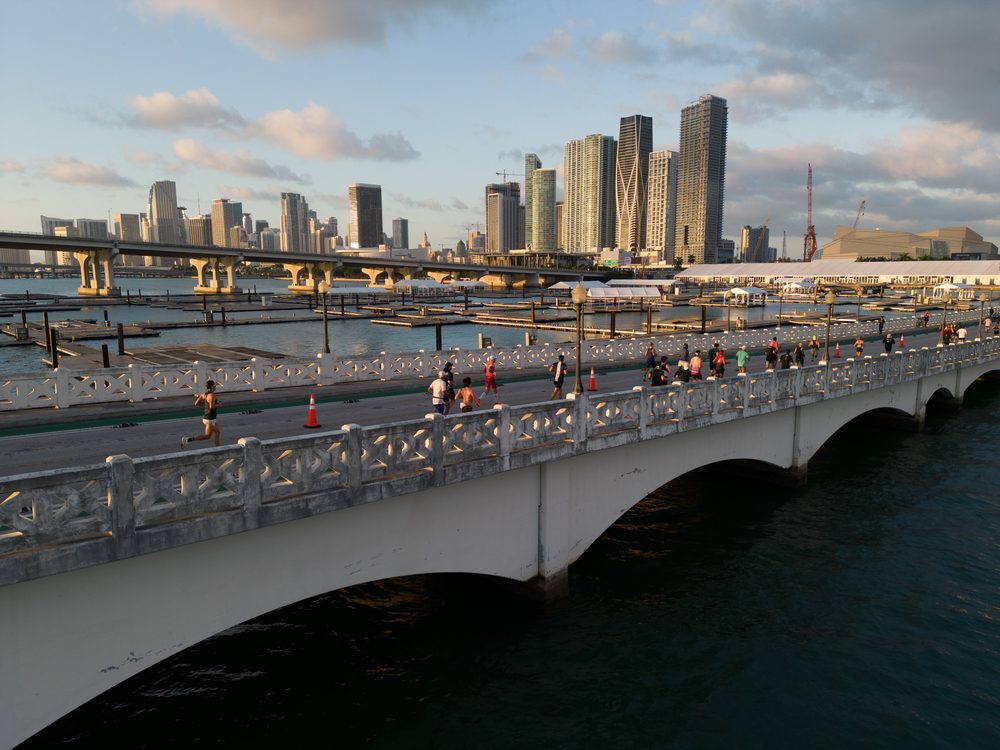A Quick Takeaway
The Story Behind the Trend
How to Make It Work for You
The Community View
The vibrant city of Miami, known for its dazzling beaches and dynamic culture, also boasts a rich and often overlooked history in the world of long-distance running, particularly the marathon. For decades, dedicated runners, visionary organizers, and an enthusiastic community have converged in South Florida to establish and nurture a tradition of endurance racing, transforming the iconic 26.2-mile challenge into a significant cultural and athletic cornerstone. This journey, beginning with nascent local races and evolving into a globally recognized event, showcases Miami’s commitment to fitness, community spirit, and its unique ability to blend athletic endeavor with the city’s distinctive tropical charm, drawing participants from around the globe to test their limits against its picturesque backdrop.
The Global Tapestry: Marathon’s Ancient and Modern Origins
To fully appreciate Miami’s marathon story, one must first acknowledge the event’s profound global roots. The marathon’s very concept is etched in ancient Greek legend, recounting the heroic run of Pheidippides from the battlefield of Marathon to Athens to announce victory, a distance roughly equivalent to the modern marathon.
This legendary feat lay dormant for centuries until its revival at the inaugural modern Olympic Games in Athens in 1896. This momentous occasion reignited the world’s fascination with the ultimate test of human endurance, establishing the marathon as a premier event in athletic competition and a symbol of human perseverance.
The standardized distance of 26 miles, 385 yards (42.195 kilometers) was officially set at the 1908 London Olympics to accommodate the royal family’s viewing pleasure, creating the precise challenge that runners face today. From that point, marathons began to proliferate worldwide, each city adding its unique flavor and history to the global running narrative.
Miami’s Early Strides: Forging a Running Culture
Miami’s journey into the world of organized running began much like many other American cities, with local enthusiasts and small clubs forming to promote health and competition. In the mid-20th century, as fitness trends gained momentum across the nation, Miami saw a gradual increase in recreational running, often centered around its scenic parks and causeways.
Early races were typically shorter distances, such as 5K and 10K events, organized by local athletic associations, YMCA branches, or community groups. These events laid the groundwork, building a base of runners and volunteers who would eventually aspire to greater challenges.
The city’s warm climate, while challenging for long-distance events, also presented an opportunity for winter races, attracting participants from colder regions. This unique appeal began to shape Miami’s identity as a potential destination for endurance sports.
The Genesis of a Grand Vision: Miami’s First Marathons
The idea of hosting a full marathon in Miami began to crystallize in the late 1970s and early 1980s, a period often referred to as the “running boom” in the United States. Inspired by iconic events like the Boston and New York City Marathons, local visionaries believed Miami could offer a distinctive experience.
One of the earliest significant marathon-distance events in South Florida was the Orange Bowl Marathon, which debuted in 1977. This race, initially organized in conjunction with the famous collegiate football game, aimed to capitalize on the holiday season and attract both local and visiting athletes.
The Orange Bowl Marathon, while not always consistently held or under the same moniker throughout its early history, marked a crucial first step. It demonstrated the logistical feasibility and community interest in staging a major long-distance event in Miami, navigating the unique challenges of heat and urban course planning.
Evolution and Expansion: The Marathon’s Growth in the 1980s and 1990s
Following the Orange Bowl Marathon’s early efforts, the marathon scene in Miami continued to evolve, often under different sponsorships and organizational structures. The challenge of sustaining a large-scale event required consistent dedication and adapting to changing trends in race management and participant expectations.
The 1980s saw various iterations of a Miami marathon, sometimes struggling for consistent funding or widespread recognition. These years were vital for learning the intricacies of road closures, volunteer coordination, and securing necessary city permits, all while striving to create an enjoyable and safe experience for runners.
By the 1990s, as the running boom matured, there was a renewed push to establish a flagship marathon event that could truly represent Miami on the national and international stage. Organizers began to focus on creating a course that highlighted the city’s most iconic landmarks, offering a scenic and memorable journey for participants.
The Birth of the Modern Miami Marathon
The turning point for Miami’s marathon history arrived with the establishment of the Miami Marathon (now known as the Life Time Miami Marathon & Half Marathon) in 2003. This event was conceived with the explicit goal of becoming a world-class race, attracting both elite athletes and a large field of recreational runners.
The inaugural event immediately set a high standard, showcasing a meticulously planned course that traversed causeways, passed through vibrant neighborhoods like South Beach and Coconut Grove, and offered breathtaking views of the Atlantic Ocean and the downtown skyline. This route quickly became a major draw, distinguishing Miami from other major marathons.
The founders, including Frankie Ruiz and Robert Pozo, envisioned more than just a race; they aimed to create a running festival that celebrated health, community, and the unique spirit of Miami. Their efforts quickly paid off, with the event growing exponentially in participation and prestige.
Course Design and Iconic Landmarks
The Miami Marathon’s course is celebrated for its flat, fast profile and its stunning visual appeal. Runners begin in downtown Miami, crossing the MacArthur Causeway to South Beach, where they run along Ocean Drive, soaking in the Art Deco architecture and ocean breezes.
The route then loops back over the Venetian Causeway, offering panoramic views of Biscayne Bay, before heading south through Brickell, Coconut Grove, and Key Biscayne (for the full marathon). This carefully crafted path ensures that participants experience the diverse beauty and energy of Miami.
Strategic placement of water stations, medical support, and enthusiastic cheer zones further enhance the runner experience, making the challenging 26.2 miles feel more manageable and enjoyable. The final stretch culminates in a triumphant finish line experience back in downtown Miami, often greeted by cheering crowds.
Impact on the City: Economy, Culture, and Wellness
The Miami Marathon has grown to become far more than just a single race; it is a significant annual event with profound economic, cultural, and health impacts on the city. Economically, the marathon draws tens of thousands of participants and spectators from all 50 states and over 80 countries, injecting millions of dollars into the local economy.
Hotels, restaurants, local businesses, and transportation services all see a surge in activity during race weekend. This tourism boost occurs during a traditionally slower period for some sectors, providing a welcome economic stimulus.
Culturally, the marathon fosters a strong sense of community pride and identity. Local residents volunteer in droves, line the streets to cheer on runners, and participate in related events. It showcases Miami as a city that values health, active lifestyles, and grand communal endeavors.
From a wellness perspective, the marathon inspires countless individuals to adopt healthier habits. Training for the race encourages regular exercise, balanced nutrition, and goal setting, impacting not just the participants but also their families and social circles. It serves as a powerful catalyst for a broader movement towards fitness in South Florida.
Beyond the Race: Community and Legacy
The legacy of Miami’s marathon extends well beyond the single race day. It has spurred the growth of numerous running clubs, training groups, and charitable initiatives throughout the region. These organizations provide year-round support for runners of all levels, fostering a vibrant and inclusive running community.
Many participants use their marathon journey to raise money for various causes, transforming their personal challenge into a collective act of philanthropy. This charitable aspect further embeds the marathon into the fabric of the community, highlighting its role as a force for good.
The event also serves as a platform for promoting health education and awareness, particularly among younger generations. Youth running programs and school initiatives often spring from the inspiration provided by the annual marathon, instilling a love for movement and physical activity from an early age.
Challenges and Adaptations: A Tropical Marathon
Hosting a marathon in Miami presents unique challenges, primarily due to its warm, humid climate. Organizers have consistently implemented strategies to mitigate these conditions, such as early start times to take advantage of cooler morning temperatures and extensive hydration stations along the course.
Medical support is also a paramount concern, with comprehensive plans in place to address heat-related issues and other medical emergencies. These adaptations ensure runner safety and contribute to the event’s reputation for excellent organization and participant care.
The city’s dynamic urban environment also requires careful planning for road closures and traffic management, an intricate dance between facilitating the race and minimizing disruption for residents. Continuous collaboration with city officials and local law enforcement is crucial for the marathon’s success.
Looking Ahead: The Future of Miami’s Marathon
As the Miami Marathon approaches its third decade, its future appears bright and robust. It continues to attract a diverse field of runners, from first-timers to seasoned veterans, and remains a bucket-list race for many due to its unique combination of scenic beauty and vibrant atmosphere.
Innovations in race technology, participant tracking, and social engagement will likely continue to enhance the runner and spectator experience. The event’s commitment to sustainability and community engagement will also undoubtedly grow, further solidifying its position as a leading marathon worldwide.
The marathon’s enduring appeal in Miami lies in its ability to blend the ancient human quest for endurance with the modern spirit of a dynamic, multicultural city. It is a testament to the power of sport to unite, inspire, and transform both individuals and communities.
From its humble beginnings as local efforts to establish a long-distance race, Miami’s marathon history has blossomed into a formidable testament to human endurance, community spirit, and strategic urban planning. The evolution of the Miami Marathon, particularly since its modern inception in 2003, showcases the city’s unique capacity to host a world-class athletic event that not only challenges runners physically but also immerses them in the unparalleled beauty and cultural vibrancy of South Florida. This enduring annual spectacle continues to define Miami as a premier destination for health, wellness, and the ultimate test of the human spirit, solidifying its place in the global pantheon of iconic marathons.







